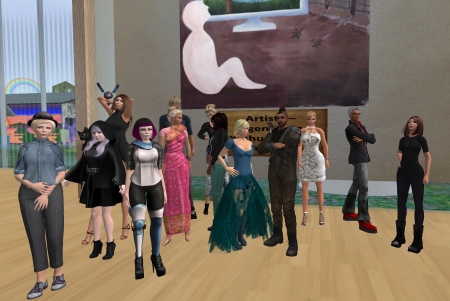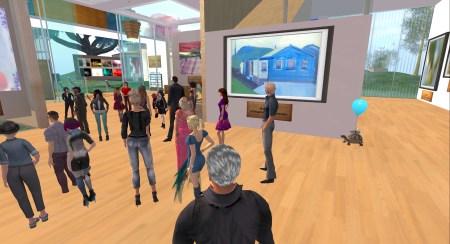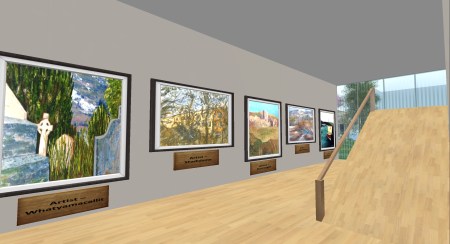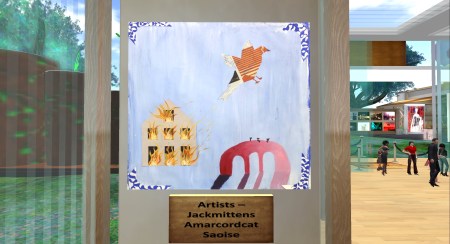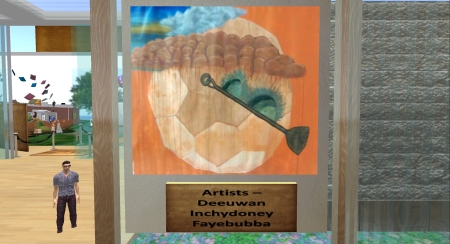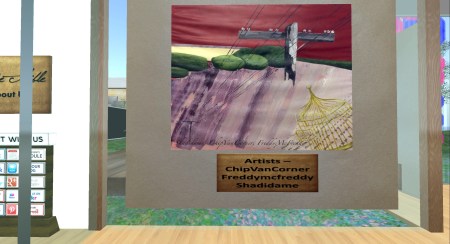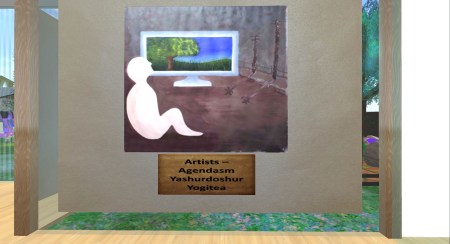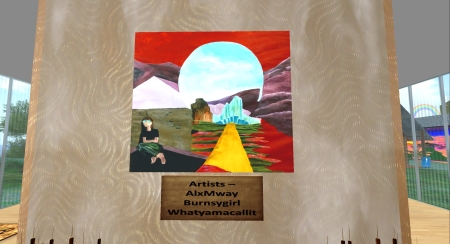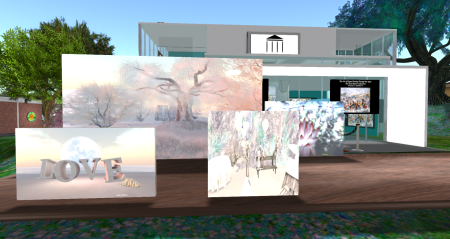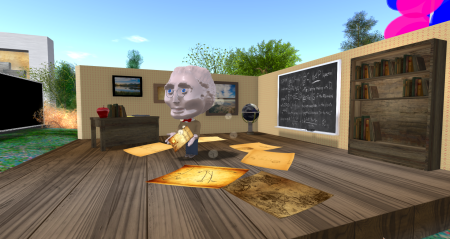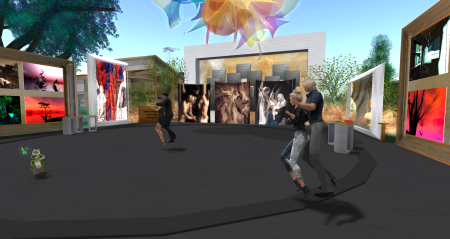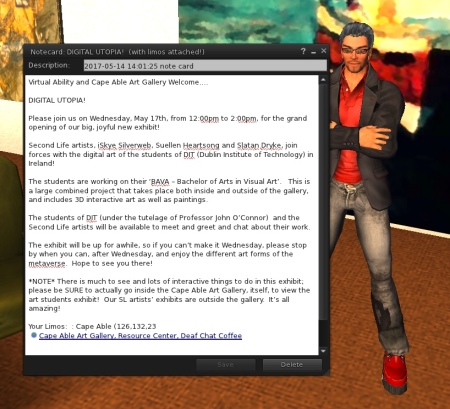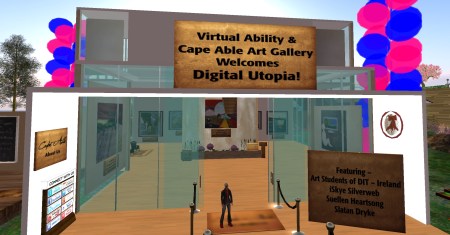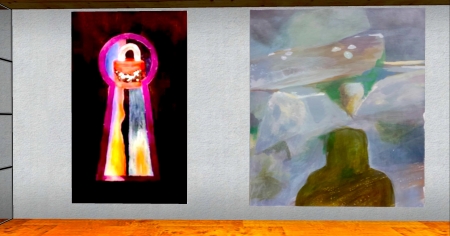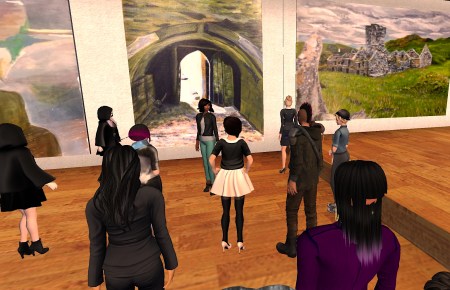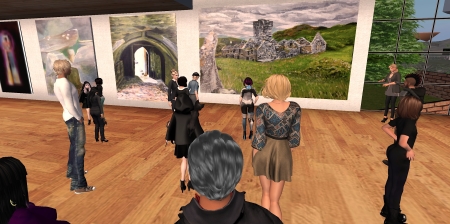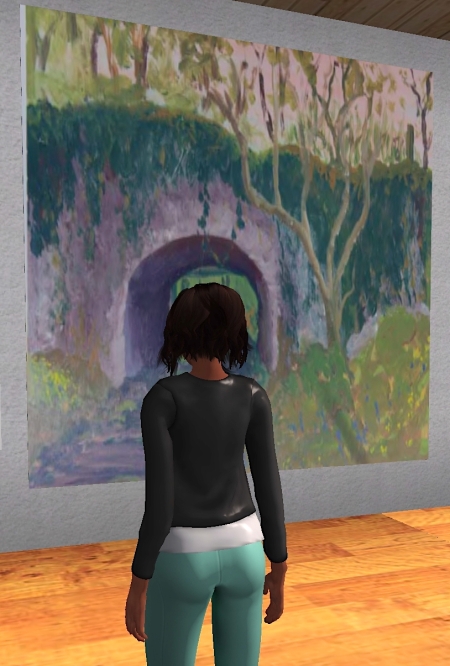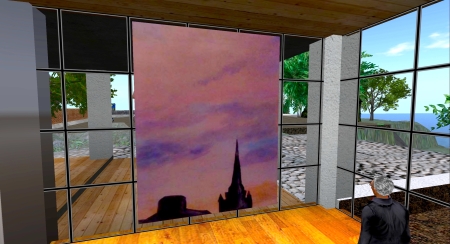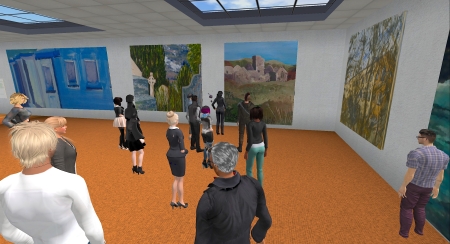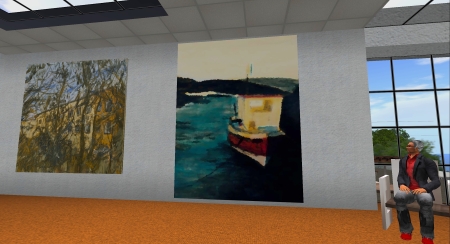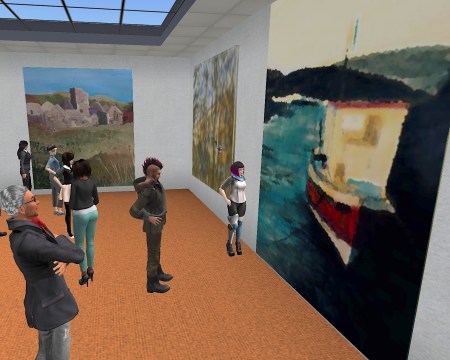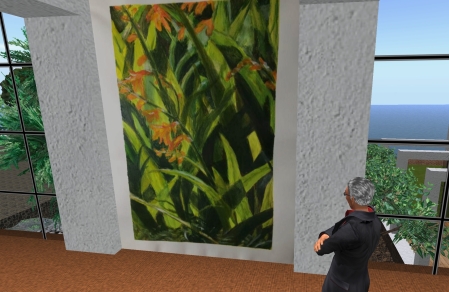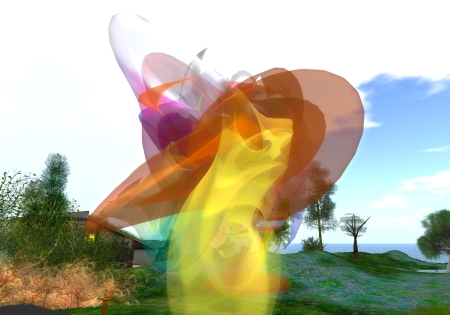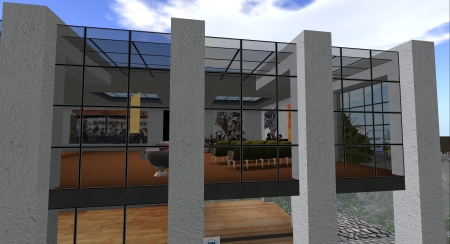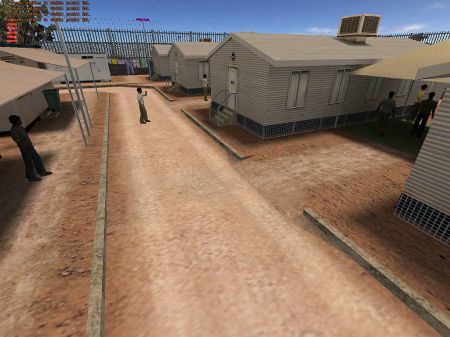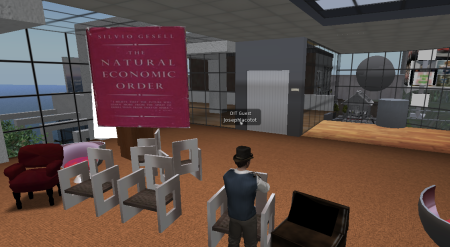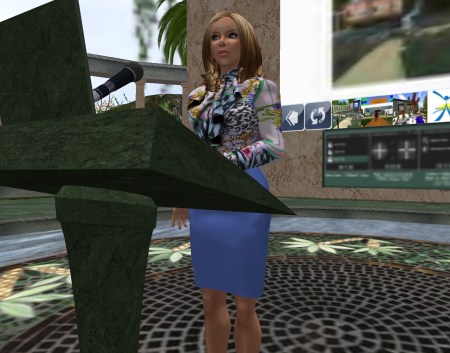
Gentle Heron welcomes the class to Virtual Ability Island.
Gentle Heron hosted our visit to Virtual Ability Island this week. We gathered in the auditorium where she told us of the origin and development of the island. It was opened in 2007 to support a community enabling people with a wide range of disabilities to thrive in online virtual worlds like SL. Now, with a population of over 1,000 individuals from six continents (in Real Life) of varying abilities (not all are disabled) the community is vibrant and active. Although disability may be less apparent in SL where, for example avatars can walk even though their human counterparts may need a wheelchair, those with visual or hearing impairment require particular consideration.
The principles of universal design and access for all underpin the development of the environment so that colour schemes, landscaping, materials and access all promote integration – there is no segregation between the able and the disabled. You won’t find any stairs here, only ramps, colour schemes are soothing to promote calm stress-free engagement and support those with visual disability, while speech is accompanied by text in local chat so those with hearing impairment are not disadvantaged. The Virtual Ability website is worth a visit if you would like to read about the history and development.
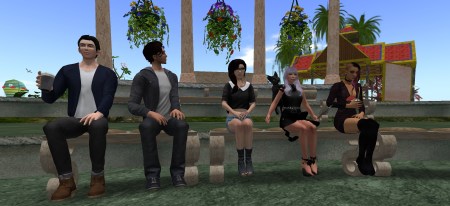
Some participants enjoying virtual refreshment during the visit to Virtual Ability Island.
Gentle spoke of the importance of community support in SL, in particular for people who may not be able to leave their homes in Real Life. Online communities may well provide their only means of socialising, getting informed, engaging with the wider world and influencing issues outside their immediate physical environment.
We then teleported to Cape Able to visit the art gallery. It hosts work by artists working in both RL and SL. We saw work by SL photographer Slatan Dryke. Next door is the virtual presence of the Fenimore Art Museum, Cooperstown, New York, with a Toulouse-Lautrec exhibition downstairs and pieces from its famed Masterpieces of American Indian Art upstairs.
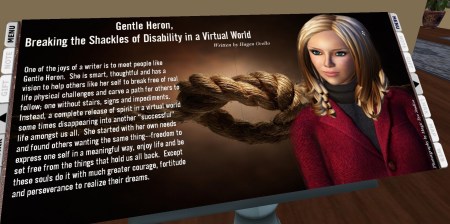
Imagine Magazine, an SL periodical, published a profile on Gentle Heron in the November 2010 edition.
The final location we visited was Cape Serenity which hosts a library and poetry garden. The library has a selection of fiction, non-fiction, poetry and drama that can be read directly in SL, or in the form of notecards, or provide links to free downloads and websites. It features publications by residents writing about their direct experiences of disability and engagement. The poetry garden was the highlight of the evening. A beautifully serene place with birdsong, a pond, rabbits and birds wandering through panels displaying poems.
THINGS TO DO BEFORE THE NEXT CLASS:
- Write the sixth post: to your blog discussing the importance of regulation, convention and etiquette in online communities.
- Write the seventh post: to your blog describing how you have contributed to the theme of your group’s project and describing the group meetings held so far.
- Read: Digital identity development is a process, by Eric Stoller.
- Read: Syrian lesbian blogger is revealed conclusively to be a married man in the Guardian newspaper 2011.
